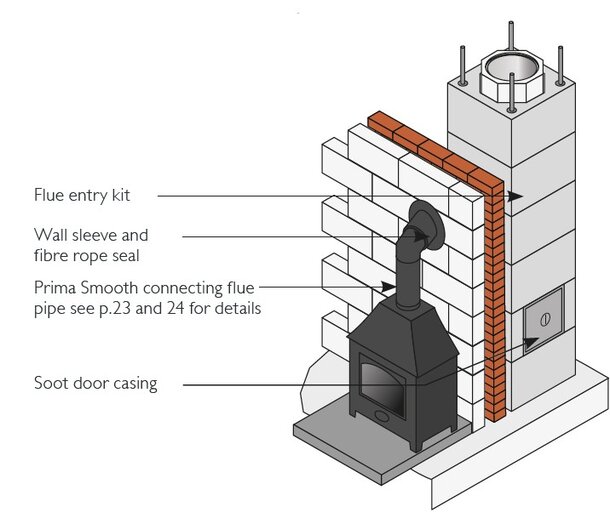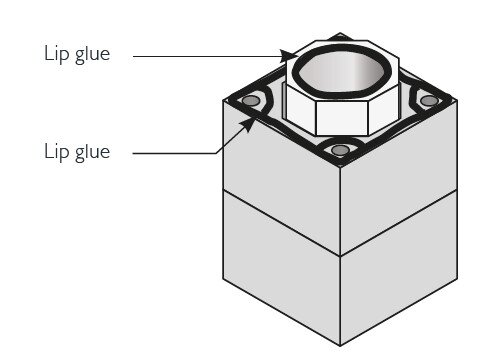Connection to an appliance, which is not connected to the fuel supply, may be carried out by a competent person. However, connection to an appliance, which is connected to the fuel supply, must be carried out by a GAS SAFE (gas) or OFTEC (oil) registered installer.
Schiedel Chimney Systems Ltd. recommends the use of HETAS registered installers for solid fuel applications.
This installation assistant is to be used as a visual aide only, by qualified installers, in conjunction with the detailed component installation instructions. For full design and installation details, the key referral documents are as follows:-
- BS EN 13229: Inset appliances including open fires fired by solid fuels. Requirements and test methods.
- BS EN 1858: Chimneys. Components. Concrete flue blocks.
- BS EN 1443: Chimneys – General Requirements
- BS EN 15287-1: Chimneys. Design, installation and commissioning of Chimneys for non-roomsealed heating appliances.
- BS EN 5440-1: Flueing and ventilation for gas appliances of rated input not exceeding 70kW net (1st, 2nd and 3rd family gases). Specification for installation of gas appliances to chimneys and for maintenance of chimneys.
- Approved Document J: Combustion appliances and fuel storage systems (England and Wales)
- DFP Technical Booklet L:- Combustion appliances and fuel storage systems (Northern Ireland)
- Technical Handbook (Domestic & Non Domestic), Section 3 – Environment (Scotland)
Appliance Installation Instructions and related standards. Other standards covering specific applications will also be relevant and should be adhered to.
Planning permission may be required and reference should be made to the local Building Control Department.
Ensure all chimney components are available and check them to ensure there has been no damage.
Do not use damaged components. Build the chimney up to follow the previously designed route, which should be as straight as possible.










